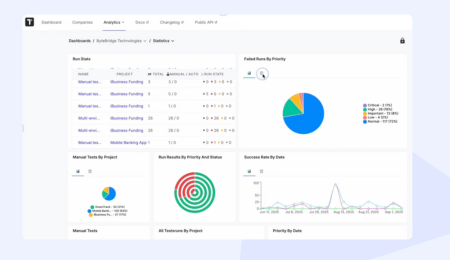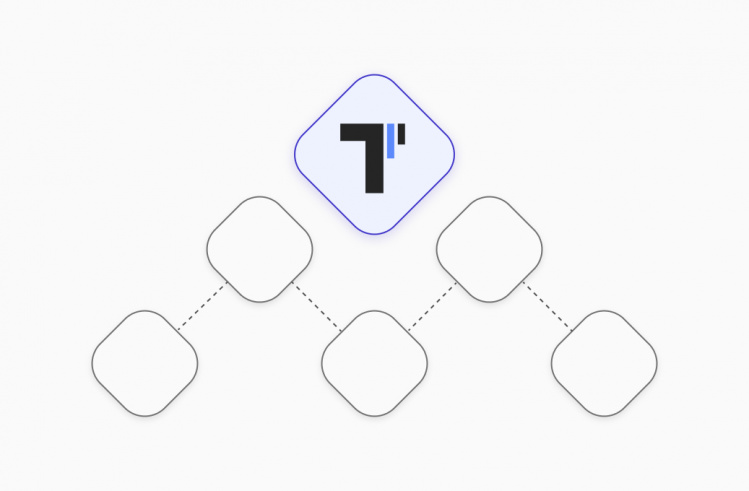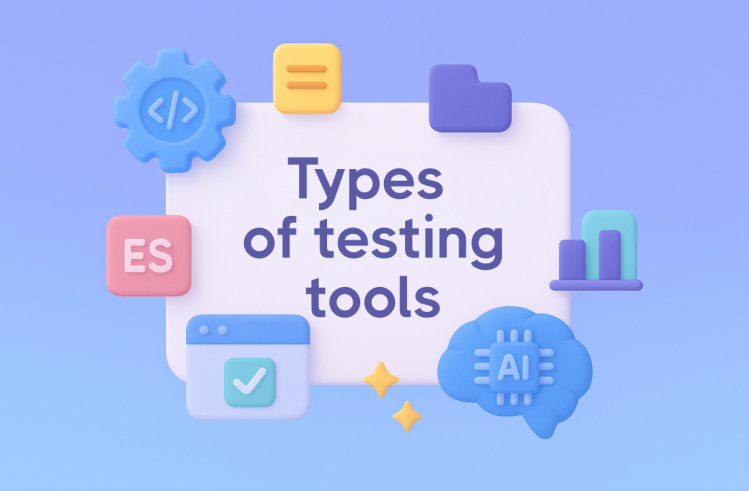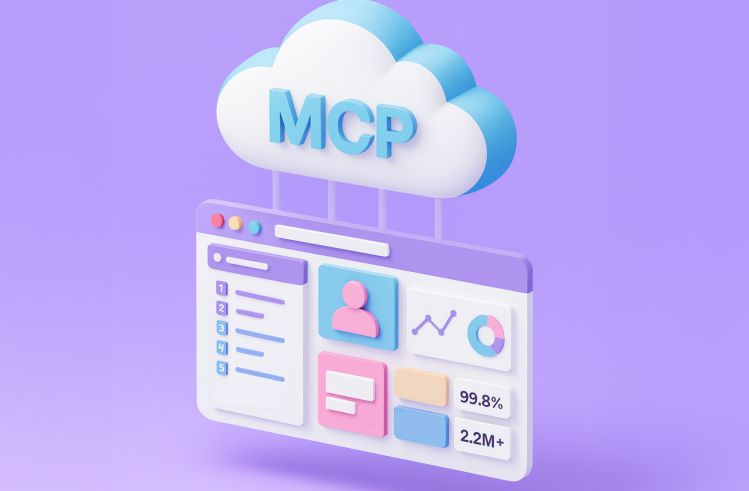Creating and delivering high-quality software solutions is an essential ingredient if you want to build a stable business in the software industry. However, the process of building successful products can be quite complex. So, how can businesses bring them to life? First, just put automation testing into practice.
According to Capgemini’s report, an automation-first approach in the delivery of quality software products should now be the norm across all quality assurance activities.
However, with new trends coming into the IT landscape, the automation testing landscape has significantly evolved. Many organizations have transformed their approach to test automation processes as well as innovative technologies have brought the latest updates in the software development life cycle.
Now, cloud, artificial intelligence (AI), machine learning (ML), robotic process automation (RPA) and natural language processing (NLP) are undeniably impacting the future of testing.
What drives changes in the future of test automation
There is often a variety of forces that press the company to respond to the changes. Let’s discover what forces shape the future of test automation:
- A need to put test automation in the center of changes.
- A need to change test automation tools to avoid loopholes in the process.
- A need to generate almost 100% test coverage.
- A need to use more innovative test automation approaches to attain desired results.
- A need to carry out the test management process properly.
- A need to outperform competitors by analyzing software products right and left.
- A need to find a more cost-effective solution.
- A need to build a team of interchangeable specialists with a low timeframe and easy learning curve to start automation testing according to Agile methodology.
The future of test automation is about which companies will be able to follow new approaches and apply innovative automation testing tools to meet the changing needs and provide quality software solutions. Furthermore, it is mandatory to remember that test automation requires collaboration and communication among all the people involved in the process. Having that in mind, it is crucial to survey test automation trends, identify which one works for you and make sure that it will lead to success. Additionally, we would like to mention that low-code test automation tools are up-and-coming now, but what are they we are going to overview below.
Top 9 Trends In Software Testing in 2025
Below you can find out top 9 testing trends that help you discover what is the future of automation testing in 2025:
#1:Exploratory testing
With technological advances, we are striving for test automation. However, effective and non-automated testing will be always in need. If teams select exploratory testing and incorporate it effectively, this can significantly change the future of testing and brings the following benefits:
- It allows project owners to gain insights by incorporating test techniques impossible to get with other testing types.
- It allows testing teams to find UI issues faster and achieve more on tight deadlines.
- It requires less time to be prepared and provides a fast bug-detection process at any stage of the software development life cycle.
- It allows testers to uncover edge cases and use them in future testing.
However, you shouldn’t just rely on exploratory testing to test your software product. Only by deploying exploratory testing in tandem with other testing methods can you take the most from your testing efforts and improve results.
#2: Сloud-based Testing
When opting for cloud-based infrastructure, quality assurance engineers have access to the pool of devices that emulate real-world traffic and environments. This helps them push code through a variety of automated tests and eliminate server configurations, deployment issues, etc. In addition to that, they can combine DevOps processes with cloud testing tools and configure them according to the product requirements. Here we have presented some benefits of this type of testing:
- When collaborating in the cloud-based environment, developers and testers can connect in real time, work more efficiently and give feedback faster thanks.
- In comparison to traditional testing, using a cloud-based one allows development and testing teams to more accurately fix bugs and bring software products to market faster.
- Cloud scalability allows dev teams to increase or decrease IT resources as needed to meet changing requirements.
- It provides a cost-effective model: organizations pay for the resources they use only.
- It drives high ROI in terms of great configuration, flexibility and scalability offered.
#3: Continuous Testing
Being a driver of quality, continuous testing allows QA engineers to redefine its strategic role in the organization. If integrated with CI/CD tools, it helps respond to increasing customer expectations with the need for high quality and speed, enables scalability and ensures fast time-to-market. Additionally, it offers the following:
- It allows teams to deliver quality products quicker as well as enhance user experience
- It responds promptly to meet customer satisfaction and usability.
- It helps teams to improve testing efficiency as well as cut down costs.
#4: Microservices Testing
According to recent statistics, 92 % of respondents reported some success with microservices while 54% described their experience as “mostly successful”. Only under 10% described a “complete success.” Definitely, this testing trend will be the next big thing in terms of its flexibility and reusability. Microservices architecture allows development teams to create a product as a suite of small autonomous services formed around a particular business domain. That’s why there is no need for developers to develop and deploy the whole stack at once if any change or update is required. When testing, teams can test each service individually and its functional pieces, monitor the ongoing performance, etc. Additionally, they can incorporate it into a DevOps environment and decrease the risk of fall of the business applications.
#5: In-sprint Automation
With in-sprint automation, software quality becomes the goal of the whole team – a Product Manager, BAs, Project Manager, Development teams, QA teams, etc. It aims to consolidate the entire testing process into one sprint by combining together all the fundamental functions of testing. Additionally, it helps realize quite a few benefits, including the following:
- It provides an opportunity to detect and correct bugs much earlier in the software development life cycle thanks to simultaneous code tests completions and test execution.
- It offers shorter test cycles, better test coverage, and shorter release cycles.
- It improves team collaboration and brings it to a new level,
#6: Crowdtesting
The core concept of crowdtesting is to harness the power of the crowd. This means that companies have their products tested by real users on real devices globally. You can make your software products more testable as well as improve your time-to-market. However, You can use crowdsourcing to scale your automated testing capacity but for the fact that the need arises — ahead of a big release or targeting a geographically distributed audience.
#7: Scriptless Test Automation
Codeless test automation is considered to be the next focus area for Agile and DevOps. That’s why more companies are going scriptless. This revolutionary approach provides them with a powerful interface for developing automation suites. Testers and developers can automate test cases without thinking about coding. What’s more, they can obtain results faster and avoid the manual testing effort to create initial test scripts. Testers only need to indicate the testing steps instead of having to write actual code. Additionally, they can focus on finding new and innovative ways to automate. Let’s consider the benefits it provides:
- It helps engage all the team members as well as other subject matter experts in the testing process.
- It helps uncover maximum bugs in the early stage of the software development life cycle.
- It requires hassle-free maintenance even in large automation test suites.
- It significantly reduces the cost of automation.
#8: NLP-based automation
Being one of the scriptless test automation trends, NLP allows testers, developers or project managers involved in the testing processes can develop, edit, manage, and automate test cases and tightly integrate them into the dynamic software delivery pipeline. As you see, there is no need to have any special skills for the team members to perform such a testing process. With an NLP-based approach, you can do the following:
- Provide a more efficient automated testing process and increase test coverage by almost 100%.
- Spend less time on writing test cases.
- Increase the productivity and re-usability of your tests.
#9: AI-driven testing
The use of artificial intelligence in testing simplifies the whole software development lifecycle. AI-powered tools help minimize the tedious and manual aspects of software development and testing while automating the entire process. Being a fairly new concept in the testing process, AI-based tools in automation testing prove to be more pertinent than ever. Here is how an AI-driven test automation solution adds value to your testing process:
- It speeds up the test cases creation with the ability to imitate test case writing style.
- It allows specialists to create test cases more effectively and easily by identifying existing and reusable components as well as removing or skipping unnecessary ones.
- It helps analyze the company’s product right and left.
- It provides greater test coverage.
- It helps prevent errors across a variety of testing activities.
- It helps delegate time-consuming and challenging maintenance processes to AI.
If test automation is today’s hot commodity, where do you see the future of testing and how can you harvest it? The right answer is to identify your business requirements, opt for the right test automation approach, select suitable automation testing tools and create conditions in which automation can produce desired results.
Are you aware of the fast movement of technologies in autotesting?
With rapid changes, fierce competition and digital transformation, automation is no longer a “nice to have,” but a “must have” competency to deliver high-quality products fast. That’s why it’s mandatory for companies to opt for test automation and stay ahead of key software testing trends.
However, testing automation is not always equal to the use of the latest technology only — it’s about agile teams, collaboration and communication, well-defined testing strategy, a properly organized test management, a smooth CI/CD workflow and DevOps pipeline. Highly innovative companies, no matter how large or small, should take it into account to drive innovation in automation testing. This will greatly increase your chances of providing the exceptional software products your customers expect.








